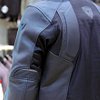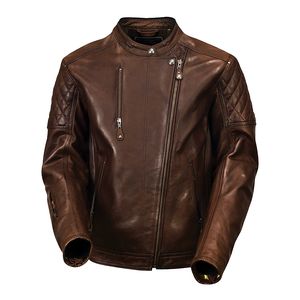I’m sure most of us know the difference between a leather jacket and a textile jacket, but there's more to consider when deciding which is the better option for you when you're out riding your motorcycle.
When I was a new rider, I really had no clue what gear to buy. I often listened to the advice of my friends. Now I realize they were just as clueless as I was. The better approach is to educate yourself a bit and focus on your individual needs, which can save you from a lot of uncomfortable moto rides. And yes, that's coming from the guy who often wore about five sweaters stuffed under a leather jacket in the middle of winter riding in the mountains of North Carolina and was incredibly cold and uncomfortable…
Let’s start with some of the basics of leather and textile motorcycle jackets.
Leather jackets
Cow, goat, and kangaroo hides are the most common types of leathers utilized in the motorcycle industry. They all offer excellent abrasion resistance while moving well with the body, which is important while operating a motorcycle.
Cowhide is the generally the most common and economical option, when it comes to jackets. Its cost-to-abrasion-resistance ratio is hard to beat, considering you're saving your skin with someone else’s. That sounds pretty morbid and it’s not really “someone,” but still. (I might have lost some of you at this point, but I’m just gonna keep going.)
Additionally, leather gets "broken in" and becomes quite comfortable and, if treated properly, lasts quite a long time. I’m sure you’ll find plenty of riders out there who prefer leather over textile because of leather's overall feel and traditional look. There’s nothing wrong with that, but leather isn’t always the best in extreme weather conditions (hot or cold).
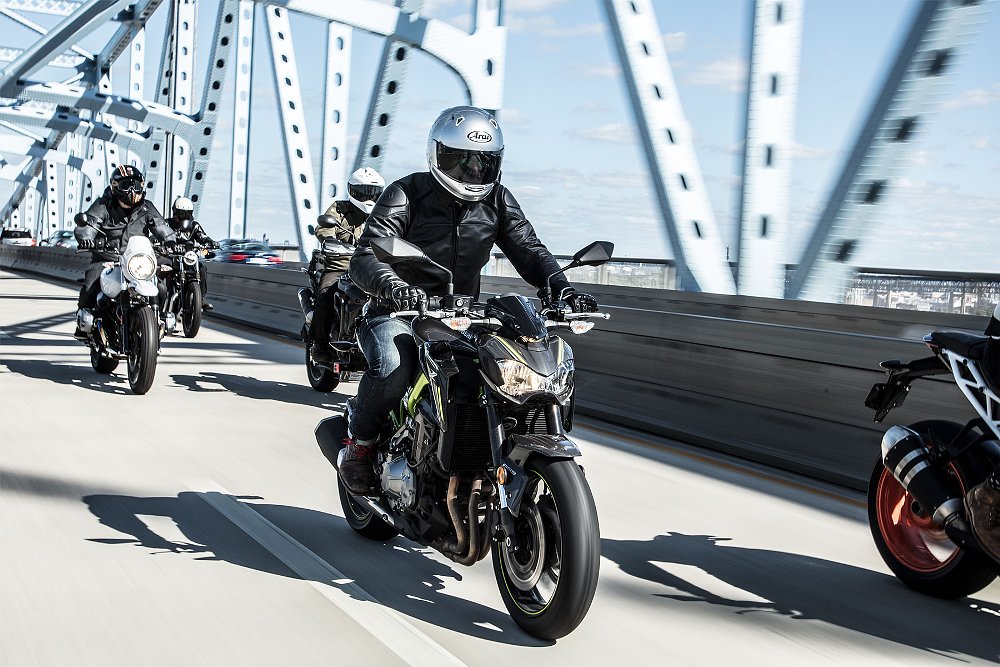
One of leather's limitations is that very few leather jackets are waterproof. Of course, there’s always exceptions to the rule, like the Rukka Aramos Leather Jacket. It's waterproof but it also costs $1,200. Typically, with leather, you’ll have to carry a waterproof layer with you. Packing a rain suit is never a bad idea on two wheels, but, it’s another expense and slight inconvenience you’ll have to consider.
While we're on the topic of bad weather, though liners aren’t quite as common with leather jackets, you can still find some options out there with removable thermal or waterproof liners if you’re looking for some additional versatility.
For hotter weather, leather tends to be heavier than textile, which is not always best when the sun is beating down on you. Many leather jackets have perforated panels around the chest, arms, and back to allow airflow, and that definitely helps more than you might think. But in my experience, perforated leather is never quite as cool as a mesh textile jacket. Another feature that helps leather jackets do their job better are accordion stretch panels for greater comfort in the three-quarters to full-tuck riding position, as well as for better freedom of movement.
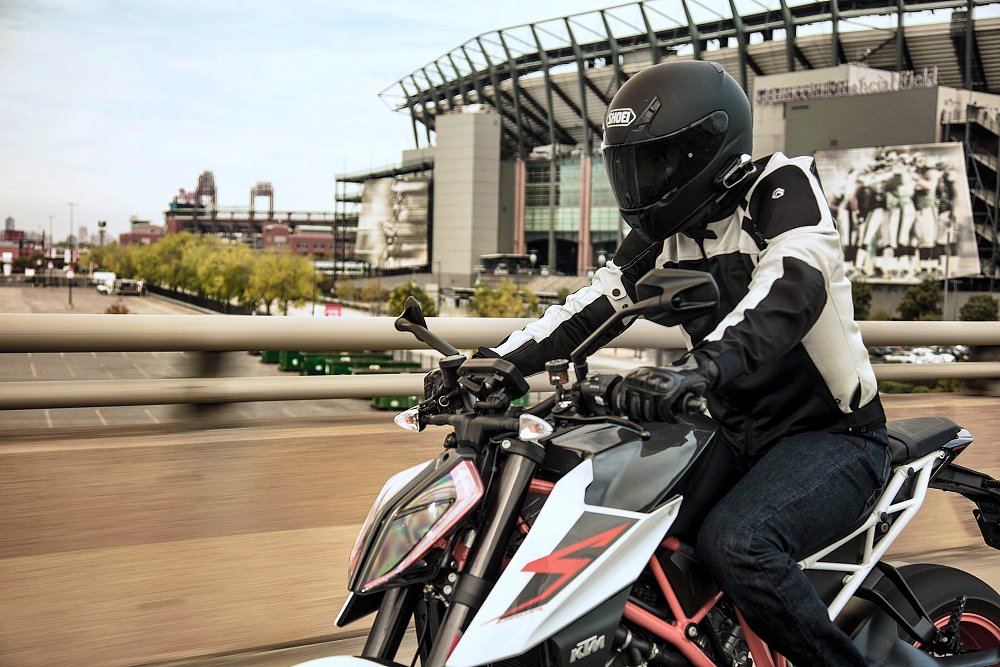
Textile jackets
Versatility is the number one advantage of textile jackets. Whether you’re looking for airflow, warmth, or waterproofing, you can generally find a jacket that provides what you need, and maybe even all of those in a single textile jacket.
A four-season jacket — one that combines removable layers and ventilation to try to manage all kinds of weather conditions — is an attractive option to many riders, but it may not always be your best option. For example, I’m currently based in Filthadelphia — excuse me, Philadelphia, (so much trash in this city, why?!?) — and we have hot summers and cold winters. A four-season jacket is certainly not going to be the best option when it’s 95 degrees this summer. It will do a great job in the winter, sure, but most four-season jackets aren’t going to provide optimal airflow in the middle of summer.
The point I’m trying to make is that not everyone should go looking for that one perfect jacket to fit all seasons. For a climate like the one I live in, I strongly recommend having a summer riding jacket and a winter riding jacket. A mesh textile jacket provides great airflow for hot summer rides and many have a removable windproof and waterproof liner that extends their usefulness a little more and bridges the gap between the summer and winter riding seasons. Then a second, waterproof textile jacket has you covered for cold months.
Now you're thinking, "Wait, Brandon, now you want me to buy two jackets?" That brings us to the next factor to consider.
Leather versus textile: The cost
Textile jackets are generally more affordable than similar leather jackets. I don’t know about you, but I pretty much spend all of my money on motorcycle parts and gear. I think that’s probably why RevZilla hired me. They know that all of my paychecks are just going to come right back to them — damn you, RevZilla!
Since textile jackets tend to cost considerably less than leather ones, you can buy a mesh jacket for maximum airflow on hot summer days and a waterproof jacket with an insulated liner for the colder ones and maybe get both for the price of a single leather jacket that will be hotter in the summer and won't keep you dry unless you also get a rain suit.
Protection
There's a reason motorcyclists have been wearing leather for about as long as motorcycles have been around. Leather provides great abrasion resistance without feeling too restrictive. Motorcycle road racers know it's not a question of if they will crash but when, how often and how hard, and every series from MotoGP down to your local club racing organization requires leather suits for racers.
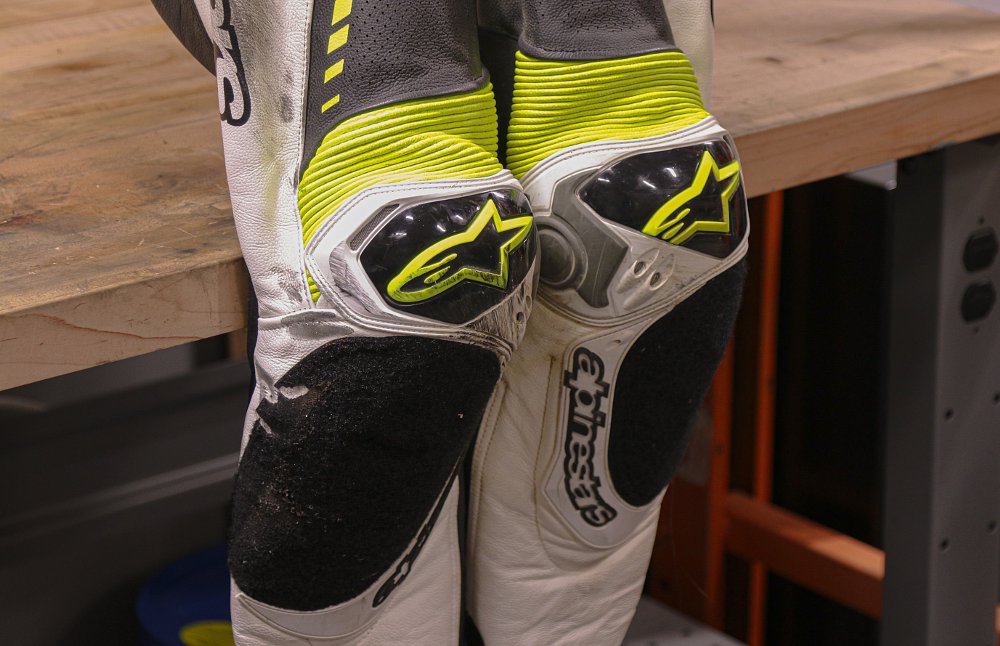
With that said, technology with textile jackets has come such a long way. Just as leather jackets of the past (especially before armor was common) used double layers of leather in impact areas like elbows and shoulders, today's textile jackets often use different types or weights of materials in impact areas to improve abrasion resistance. The jacket can be lighter overall but still more protective where protection is most needed. It's not exactly scientific data, but I can tell you I’ve crashed in textile gear more than once and it’s always performed really well.
The other side of protection is armor, and both leather and textile motorcycle jackets generally use the same armor. Also, we also see features like external hard sliders on shoulders, for example, so in a crash you are more likely to slide than tumble. Again, you can find these features on both leather and textile jackets, so there's no real difference there. The latest in protection is the wearable air bag, and those can be combined with either leather or textile. Overall, both kinds of jackets keep getting better and better at protecting us.
Things to look for when buying a leather or textile jacket
Whether you end up choosing a textile or a leather jacket, there are a few features I always look for to improve comfort and convenience.
Depending on where and how you ride, you should consider waterproof protection. Your circumstances and preferences may lead you to decide a leather jacket and a cheap rain suit to put over it in case of a shower works fine. If you ride a lot in cold and wet conditions, you'll be more likely to want a textile jacket with waterproof protection built in. I’ve got more to say on that topic in my article on waterproof gear, if you’re interested.
Speaking of weather, your jacket may come with a thermal liner or a waterproof liner that you can remove or add as needed. I like the added versatility and the ease of being able to zip a liner in when I need it or zip it out and toss it in my pack if I don’t.
One of the biggest things I look for are accordion stretch panels, relief stitching, or a gusset in the shoulders. This allows the jacket to give as you move around on the bike and some stretch around the shoulder blades makes the jacket more comfortable in the riding position.
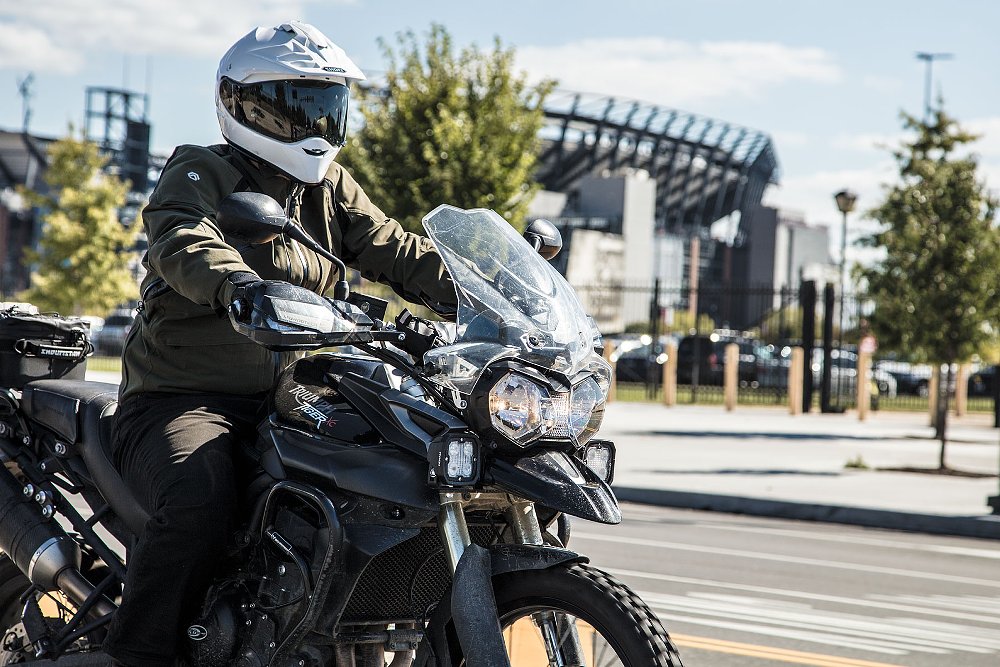
One small but useful feature I look for is a Napoleon pocket. It gets its name from the famous painting of Napoleon Bonaparte, by his artist Jacqes-Louis David, with his hand tucked inside his jacket. Most jackets on the market today come with one of these pockets, but not all of them are waterproof, and it's a very handy feature.
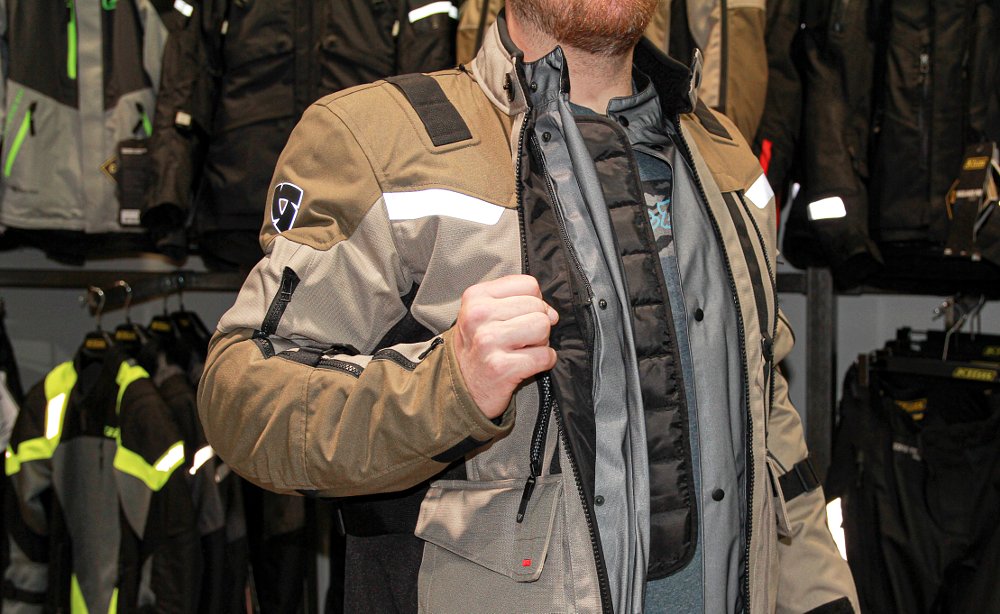
When comparing jackets, don't forget to consider the armor. Almost all moto jackets on the market today, at minimum, will come with CE Level 1 protection at the shoulders and the elbows. Make sure your jacket at least has this amount of impact protection. If you’ve got your heart set on a particular jacket but would like better protection, you can always upgrade the armor later. Back protection is not commonly included in moto jackets today, but it’s an easy upgrade and almost all jackets come with a pocket so you can easily add this protection.
Sooo… leather or textile?
Both leather and textile motorcycle jackets have come a long way in terms of protection, features and comfort. If you’re looking for maximum versatility at an affordable price, textile jackets are probably going to be your best bet. Many riders still prefer the look and feel and time-proven abrasion resistance of traditional leather.
Sometimes, you can even get some of the best of both. Lately I've been wearing the Reax Apex Pro Mesh Jacket. It combines textile mesh panels in the body for maximum air flow on hot days and has leather in the impact areas for abrasion resistance and durability. It also comes with a removable waterproof liner that can be worn either under or over the jacket. It even has a pocket for storing the liner when it's not needed.
In the end, choosing between leather or textile is just a question of doing your homework on your needs. Then, sometimes you just have to follow your heart.









